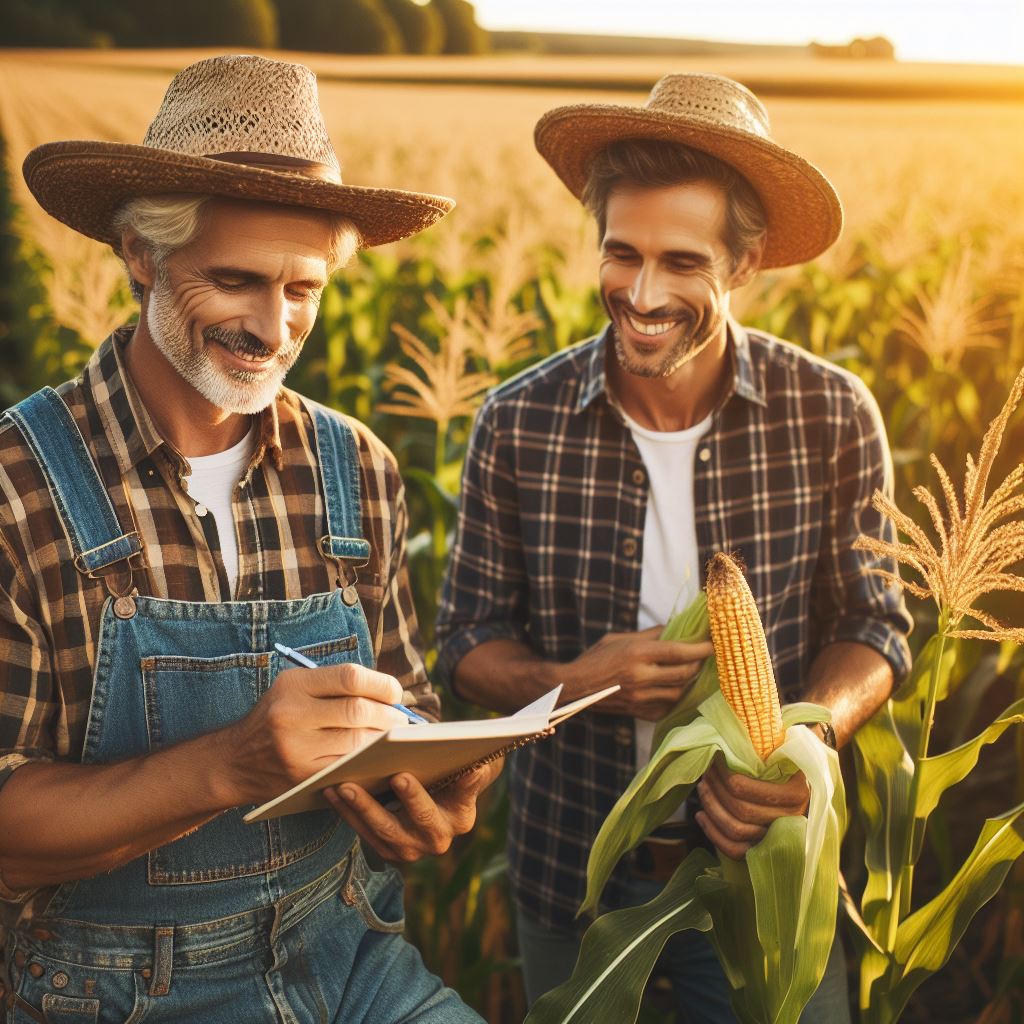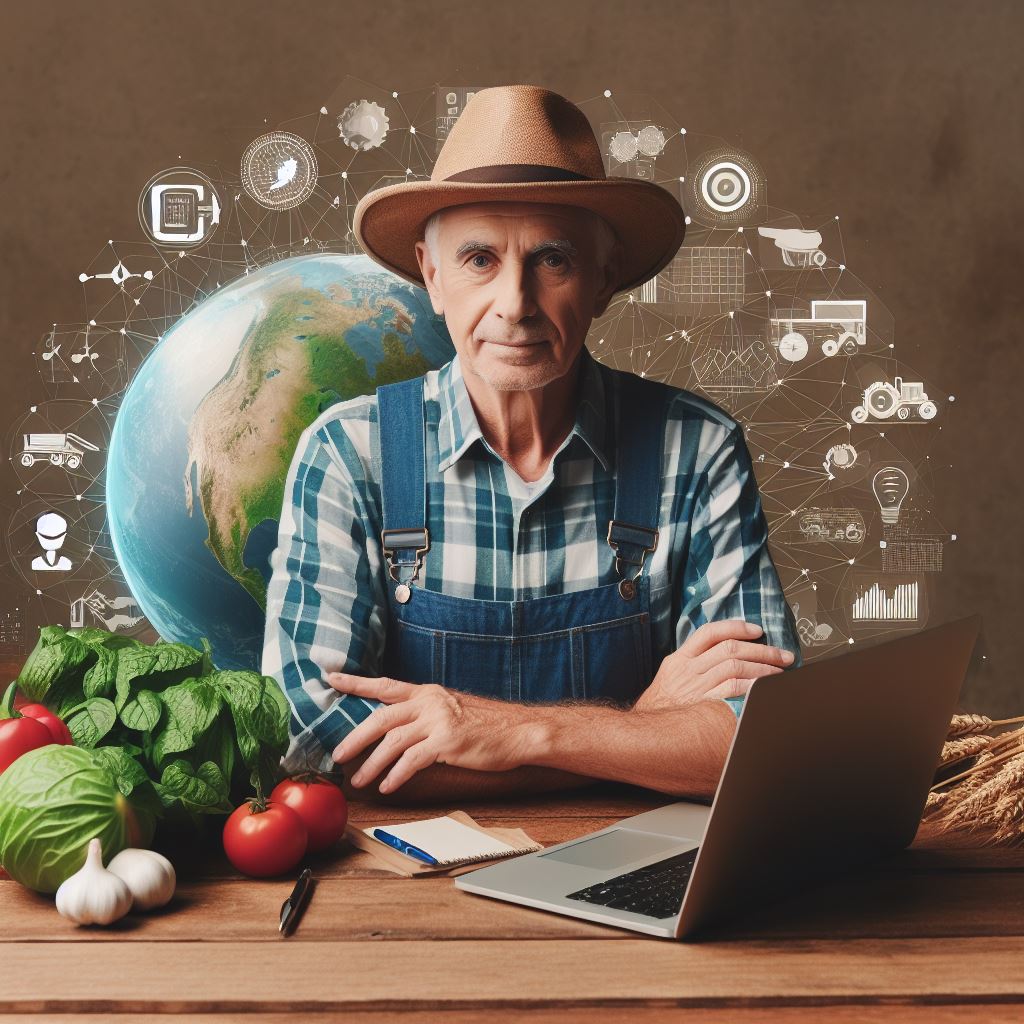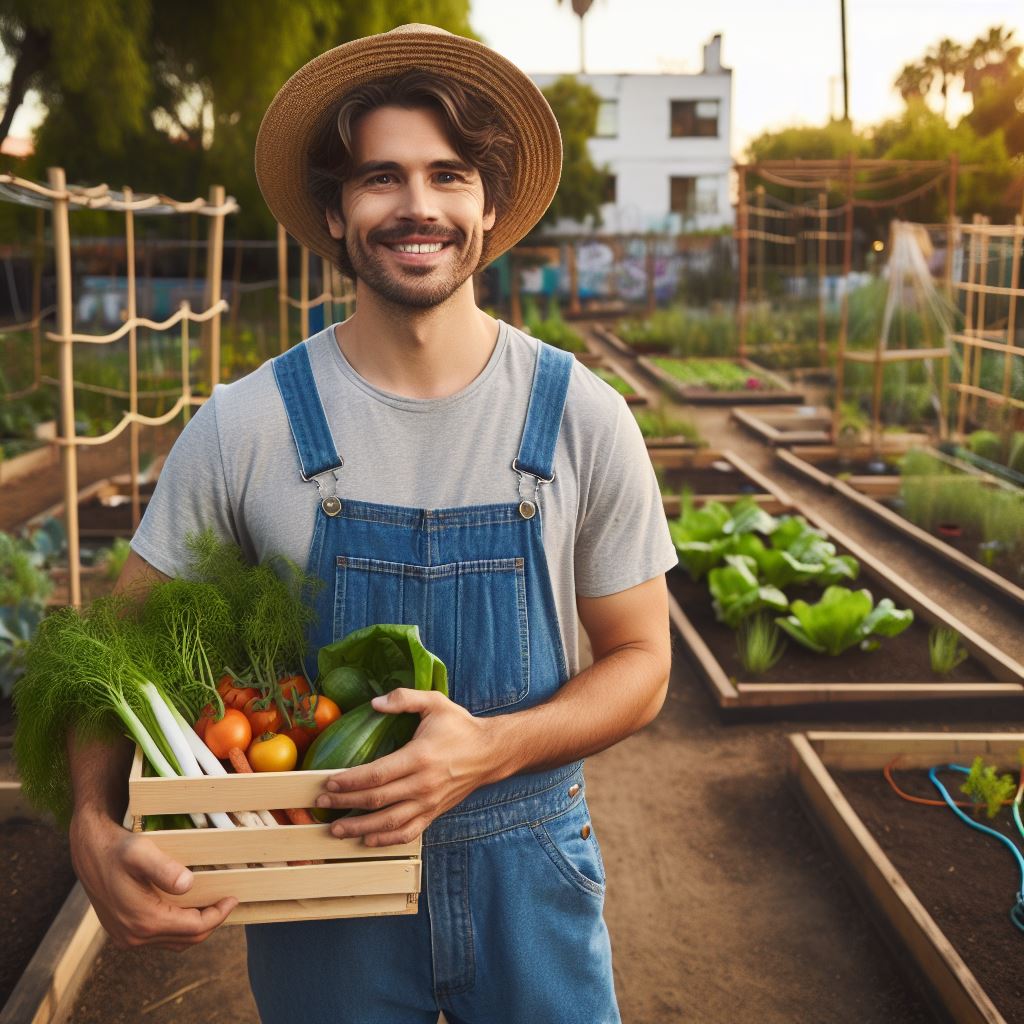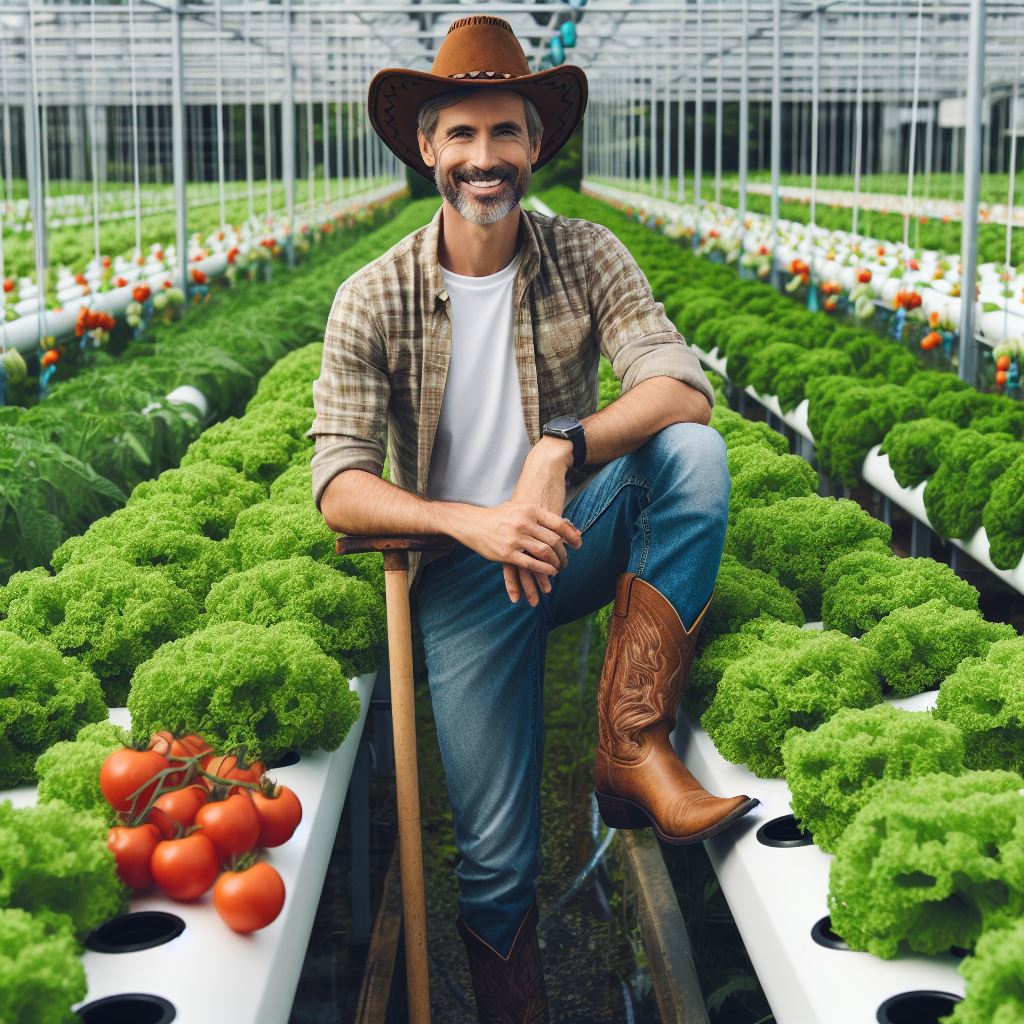Introduction
In the evolving landscape of agriculture, smart farming has emerged as a transformative approach, integrating advanced technologies to revolutionize traditional practices.
Smart farming, characterized by the strategic implementation of cutting-edge technologies, represents a pivotal shift in the agricultural paradigm.
The importance of agri-tech innovations in shaping the future of farming cannot be overstated.
As the global population burgeons, the demand for food intensifies, placing unprecedented pressure on the agricultural sector.
In response to this challenge, agri-tech innovations have become instrumental in ensuring food security, optimizing resource utilization, and fostering sustainable agricultural practices.
Smart farming leverages technologies such as artificial intelligence, Internet of Things (IoT), robotics, and data analytics to enhance efficiency and productivity.
This technological integration allows farmers to make data-driven decisions by providing real-time insights into crucial aspects like crop health, soil conditions, and weather patterns.
Precision farming, a key component of smart farming, utilizes IoT sensors and data analytics to enable precise resource allocation.
This minimizes waste, maximizes yields, and promotes sustainable agricultural practices.
Robotics and automation further contribute to efficiency, automating tasks such as planting, harvesting, and monitoring.
Artificial intelligence plays a pivotal role in predictive modeling, allowing farmers to anticipate potential challenges like pest infestations and disease outbreaks.
This proactive approach enables timely interventions, reducing crop losses and minimizing the reliance on harmful pesticides.
In essence, the introduction of smart farming and the ongoing development of agri-tech innovations signify a revolution in agriculture.
This tech-driven evolution not only addresses the immediate challenges of food security and resource scarcity but also sets the stage for a more sustainable and productive future in agriculture.
As we navigate the agricultural landscape in 2024, the importance of agri-tech innovations becomes increasingly apparent in shaping a resilient and technologically advanced agricultural sector.
Transform Your Agribusiness
Unlock your farm's potential with expert advice tailored to your needs. Get actionable steps that drive real results.
Get StartedAgri-Tech Innovation 1: Vertical Farming
Definition and Explanation of Vertical Farming
- Vertical farming is a revolutionary agricultural technique that involves growing crops in vertically stacked layers or structures.
- It utilizes advanced technologies such as hydroponics, aeroponics, and LED lighting to create an optimal growth environment.
- This method maximizes the use of limited space, making it suitable for urban areas with limited land availability.
Benefits of Vertical Farming
- Increased Crop Yield: Vertical farming can produce higher crop yields compared to traditional farming methods.
- Year-Round Production: With controlled indoor environments, crops can be grown year-round, eliminating seasonal limitations.
- Water Efficiency: Vertical farming uses up to 90% less water compared to conventional farming techniques.
- Reduced Dependency on Pesticides: By operating in a controlled environment, vertical farms can minimize the use of pesticides.
- Shorter Farm-to-Table Cycle: Vertical farms located near urban centers reduce transportation time and deliver fresh produce quickly.
Examples of Successful Vertical Farming Projects
- GrowStack: A vertical farming project in Singapore utilizing automated systems to grow leafy vegetables.
- AeroFarms: Based in Newark, AeroFarms is one of the largest vertical farming companies, growing a variety of crops.
- Plenty: A vertical farming startup in San Francisco that focuses on providing locally grown, pesticide-free produce.
Impact of Vertical Farming on Agriculture in 2024
- Increase in Urban Agriculture: Vertical farming will continue to play a crucial role in urban areas, ensuring food security.
- Resource Optimization: With limited land and water resources, vertical farming offers a sustainable solution.
- Climate Change Adaptation: Vertical farms can create a controlled environment that mitigates the impact of climate change on crop production.
- Job Creation: The growth of vertical farming will contribute to new job opportunities, especially in technology and agriculture sectors.
- Improved Food Quality: Vertical farming allows for precise control over growing conditions, resulting in higher-quality and nutrient-rich produce.
In general, vertical farming presents a game-changing solution to the challenges faced by traditional agriculture.
With its ability to increase crop yields, conserve resources, and adapt to changing climatic conditions, vertical farming will likely dominate the agricultural landscape in 2024.
Through successful projects like GrowStack, AeroFarms, and Plenty, this innovative technology is already proving its viability.
As urban populations grow and the demand for fresh, sustainable produce rises, vertical farming will revolutionize the way we approach food production.
Embracing this agri-tech innovation is crucial for a more sustainable and resilient future.
Read: New Wave in Farming: AI-Driven Agri-Tech Startups
Agri-Tech Innovation 2: Precision Agriculture
Definition and explanation of precision agriculture
Precision agriculture, also known as satellite farming or site-specific crop management, is an advanced farming approach that involves using technology to optimize crop production.
This method enables farmers to make data-driven decisions based on specific field conditions.
Technologies used in precision agriculture
- Global Positioning System (GPS): Farmers can use GPS technology to precisely determine their location, collect spatial data, map fields, monitor machinery, and apply precision techniques.
- Remote sensing: Satellites, aircraft, or drones employing remote sensing technology offer farmers vital information on crop health, moisture levels, and nutrient deficiencies.
- Variable rate technology (VRT): VRT allows farmers to apply inputs, such as fertilizers or pesticides, at varying rates based on specific field conditions.
This technology prevents over-application and reduces costs. - Yield monitoring systems: Yield monitors attached to harvesting machinery collect data on crop yield, moisture levels, and other relevant parameters.
This information helps farmers understand field variations and assess the success of different management practices.
Advantages of precision agriculture
- Increased crop yield: Precision agriculture helps farmers optimize their crop production by providing insights into soil characteristics, plant health, and ideal growing conditions.
This leads to higher yields and improved profitability. - Resource efficiency: By precisely applying inputs like water, fertilizers, and pesticides, farmers can reduce wastage and minimize environmental impact.
This method ensures that resources are used efficiently without compromising productivity. - Improved decision-making: In precision agriculture, advanced technology and data analytics empower farmers to make informed decisions on planting, irrigation, nutrient management, and pest control.
This, in turn, enhances overall farm management. - Minimized risk: Farmers use precision agriculture to identify and address field issues, minimizing crop losses from pests, diseases, or adverse weather.
Integration of precision agriculture in farming practices in 2024
- Data-driven farming: In 2024, precision agriculture will be fully integrated into farming practices, with farmers relying heavily on data analytics and real-time monitoring to optimize their operations.
- Automated machinery: With precision agriculture technologies, farmers will adopt autonomous machinery for accurate and efficient tasks like planting, spraying, and harvesting.
- Predictive modeling: Farmers will use advanced algorithms and machine learning to develop predictive models, anticipating crop performance, market trends, and optimal planting/harvesting times.
- Collaborative platforms: Farmers will actively engage in online platforms and networks, exchanging data, best practices, and market information to improve their decision-making and overall productivity.
- Emphasis on sustainability: Supporting sustainable farming, precision agriculture optimizes resource usage, reduces chemical inputs, and minimizes agriculture’s environmental impact.
Basically, precision agriculture is transforming the way farming is practiced by leveraging technology to optimize productivity, resource management, and decision-making.
In 2024, farmers will heavily rely on precision agriculture, integrating advanced technologies and data analytics to enhance crop yield, reduce costs, and promote sustainability.
Read: Wearable Tech for Cattle: A Deep Dive
Agri-Tech Innovation 3: Robotics and Automation
Overview of Robotics and Automation in Agriculture
Robotics and automation have revolutionized the field of agriculture by offering efficient and precise solutions.
These technologies involve the use of autonomous machines and robotic systems to perform various farming tasks.
Applications of Robots and Automation in Farming
- Harvesting: Robots equipped with computer vision and AI can efficiently harvest crops, reducing manual labor.
- Weeding: Automated systems detect and remove weeds, minimizing the need for chemical herbicides.
- Seeding and Planting: Robotic systems can accurately plant seeds in a predetermined pattern, optimizing crop yield.
- Spraying: Drones equipped with sensors and nozzles enable targeted and precise pesticide spraying.
- Milking: Robotic milkers can effectively and hygienically milk cows without human intervention.
Benefits and Challenges of Using Robots in Agriculture:
Benefits
- Increase in efficiency and productivity due to precise and timely task execution.
- Reduction in labor costs and dependency on human workforce.
- Minimization of chemical use, leading to environmentally-friendly practices.
- Improved data collection and analysis for better decision-making.
- Enhanced safety by minimizing human exposure to hazardous farming conditions.
Challenges
- High initial investment and maintenance costs may limit small-scale farmers’ accessibility.
- Integration and compatibility issues with existing farm infrastructure and machinery.
- Technical complexities and the need for skilled expertise to operate and maintain robotic systems.
- Potential job displacement and the need for retraining the workforce to adapt to these technologies.
- Cybersecurity risks and the need for robust data protection measures.
Predictions for the Future of Robotics and Automation in Farming
The future of robotics and automation in agriculture looks promising, with several potential developments:
- Advancements in machine learning and AI will make robots more efficient and adaptable to different farming tasks.
- Increased collaboration between robotics and precision farming will result in optimized resource management.
- Integration of sensor technologies will enable real-time monitoring and automated adjustments in farming practices.
- Robotic systems will become more affordable and accessible, benefiting small-scale and resource-constrained farmers.
- Further developments in autonomous vehicles and drones will revolutionize the transportation and logistics aspects of farming.
All in all, robotics and automation have already made significant contributions to the field of agriculture, and their potential for future advancements is immense.
These technologies offer numerous benefits, including increased productivity, reduced labor costs, and enhanced sustainability.
However, they also pose challenges such as high initial investment costs and workforce displacement.
As we move towards 2024, advancements in robotics, AI, and sensor technologies will continue to shape the future of farming, making it more efficient, precise, and sustainable.
Read: Agri Robots: Revolutionizing Precision Agriculture

Find Out More: Drone Tech in Pest Control: A Study
Agri-Tech Innovation 4: Internet of Things (IoT)
Explanation of IoT in agriculture
- IoT refers to the network of devices connected through the internet, enabling data transmission and control.
- In the context of agriculture, IoT involves incorporating sensors, devices, and software to enhance farming operations.
- These devices collect real-time data from the fields and transmit it for analysis and decision-making.
Examples of IoT devices and applications in farming
- Soil moisture sensors: These sensors measure the moisture content in the soil, helping farmers optimize irrigation.
- Weather monitoring devices: IoT weather stations provide accurate weather data to manage crop protection measures and irrigation schedules.
- Smart livestock trackers: IoT technology allows farmers to monitor the location, health, and behavior of their livestock remotely.
- Automated irrigation systems: IoT-based irrigation systems adjust water supply based on real-time data, preventing water wastage.
- Robotic farming systems: Connected robots equipped with sensors and AI algorithms perform tasks like harvesting, weeding, and pest control efficiently.
Advantages of using IoT in agriculture
- Enhanced productivity: IoT devices help optimize resource utilization, leading to increased crop yields and improved efficiency.
- Precise decision-making: Real-time data collection enables farmers to make informed decisions regarding irrigation, fertilization, and pest management.
- Cost savings: IoT devices reduce manual labor requirements while improving resource management, resulting in cost savings for farmers.
- Improved sustainability: IoT-based systems promote sustainable farming practices by reducing water and chemical usage and minimizing waste.
- Remote monitoring and control: Farmers can remotely monitor and control various operations, providing flexibility and reducing travel time.
Potential growth and impact of IoT in farming in 2024
- Growth in adoption: The use of IoT in agriculture is expected to continue growing rapidly, with more farmers adopting smart farming techniques.
- Data-driven agriculture: IoT will enable farming practices based on real-time data, leading to optimized decision-making and resource allocation.
- Increased automation: IoT devices will facilitate the automation of various farming tasks, reducing labor requirements and increasing operational efficiency.
- Improved crop quality: With accurate data, IoT can help farmers optimize crop conditions, leading to improved quality and better market value.
- Sustainable farming practices: The integration of IoT will further support sustainable farming practices, minimizing environmental impact and resource depletion.
To sum it up, IoT in agriculture brings numerous benefits and opportunities for farmers in 2024.
It enables precise monitoring and control of farming operations while improving productivity and sustainability.
With the increasing adoption of IoT devices and applications, farming practices will become data-driven, automated, and better equipped to tackle future challenges.
Embracing IoT is key to ensuring a more efficient, profitable, and sustainable agricultural sector.
Showcase Your Farming Business
Publish your professional farming services profile on our blog for a one-time fee of $200 and reach a dedicated audience of farmers and agribusiness owners.
Publish Your ProfileRead: Robotics in Farming: A 2024 Guide
See Related Content: AI in Farming: Enhancing Animal Welfare
Agri-Tech Innovation 5: Artificial Intelligence (AI)
Definition and Explanation of AI in Agriculture
- Artificial Intelligence (AI) refers to the simulation of human intelligence in machines.
- In agriculture, AI involves the use of computer systems to perform tasks that require human intelligence.
Applications of AI in Farming
- AI can be used for crop monitoring, where it analyzes data from sensors to detect disease or nutrient deficiencies.
- Another application is precision farming, where AI helps optimize irrigation and fertilizer usage based on real-time data.
- AI can also be employed for autonomous vehicles and drones used in farming operations.
- Furthermore, AI can assist in predicting weather patterns to optimize planting and harvesting schedules.
- AI can aid in yield prediction, providing accurate forecasts based on historical data and crop conditions.
Benefits and Potential of AI in Agriculture
- AI in agriculture can increase efficiency by automating tasks, saving time and reducing human errors.
- With AI, farmers can make data-driven decisions, leading to improved crop yields and reduced resource wastage.
- AI can help in sustainable farming practices by minimizing the use of pesticides and water.
- By providing early detection of diseases or pests, AI can prevent or minimize crop losses.
- AI-powered predictive analytics can enhance profitability and economic sustainability in the agricultural sector.
Predictions for the Use of AI in Farming in 2024
- In 2024, AI will play a central role in transforming farming practices and making them more efficient.
- AI algorithms will become even more advanced, offering better analysis and decision-making capabilities.
- Farmers will increasingly rely on AI for accurate yield predictions and optimizing resource management.
- Autonomous vehicles and drones powered by AI will become standard tools on farms.
- AI-based systems will provide real-time monitoring and data analysis for enhanced crop management.
In summary, artificial intelligence (AI) is revolutionizing the agricultural sector by automating tasks, providing valuable insights, and optimizing resource usage.
Its applications in crop monitoring, precision farming, and yield prediction offer numerous benefits, including increased efficiency, improved crop yields, and sustainable farming practices.
As technology continues to advance, AI will undoubtedly play a vital role in shaping the future of farming in 2024 and beyond.
You Might Also Like: Farm Bots: Revolutionizing Animal Feed
Gain More Insights: Greenhouse Tech: Future of Controlled Agri
Conclusion
In this blog post, we have explored the top 5 agri-tech innovations anticipated in 2024.
These include autonomous farming robots, precision agriculture, vertical farming, blockchain technology, and AI-powered disease detection systems.
Implementing these technologies in smart farming is crucial for several reasons. Firstly, autonomous farming robots can greatly increase efficiency and reduce labor costs.
Precision agriculture enables farmers to optimize resource allocation and minimize waste.
Vertical farming allows for higher crop yields in urban areas with limited space. Blockchain technology ensures transparency and traceability in the supply chain.
AI-powered disease detection systems can help prevent the spread of diseases and protect crops.
Looking ahead, the future prospects of agri-tech innovations seem promising.
These technologies have the potential to revolutionize agriculture, making it more sustainable and productive.
However, there are also challenges that need to be addressed.
These include the high initial costs of implementing these technologies and the need for proper training and education for farmers.
Additionally, there may be concerns regarding data privacy and cybersecurity in the context of digital farming.
Ultimately, the top 5 agri-tech innovations in 2024 hold great promise for the future of smart farming.
By embracing these technologies, farmers can enhance productivity, reduce environmental impact, and meet the increasing demands of a growing population.
While there are challenges to overcome, the potential benefits make investing in these innovations worthwhile.
Smart farming has the power to transform the agricultural sector and contribute to a sustainable and secure food future.




